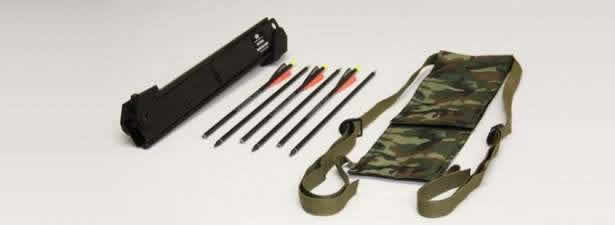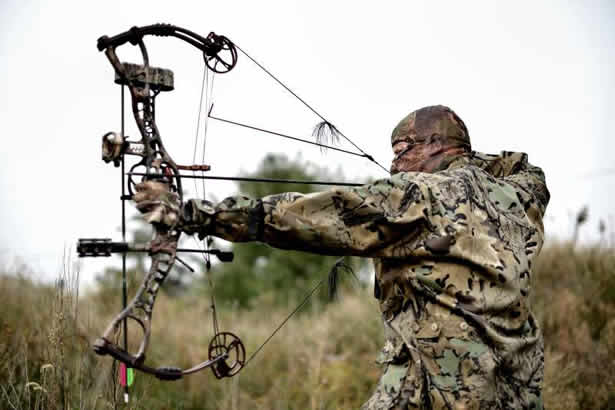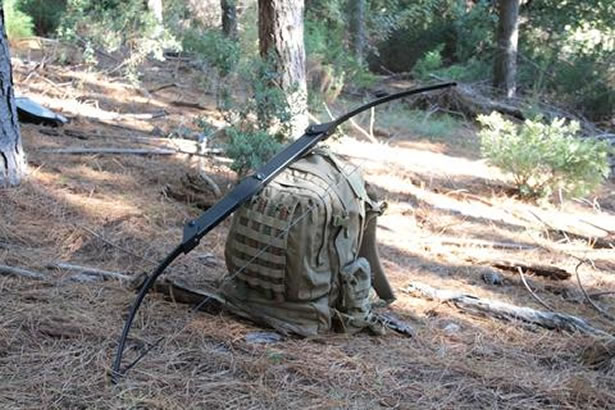Have You Considered a Survival Bow?

Do you ever find yourself dreaming of living off the land? Many of us fantasize about such a situation, and we wonder how our skill set would hold up. We learn to build fire, learn to build different shelters, and try to plan for all the challenges we would encounter. If you are like me and enjoy practicing survival skills, you know doubt have tried to figure out how to best obtain food from the land. If thoughts like this cross your mind, you may consider getting yourself a survival bow.
Surviving With a Bow
There are several reasons a bow is a good survival tool. One is the sustainability of the weapon. Guns, no matter the amount of ammunition you stockpile, will run out of ammunition. On the other hand, bows have proven their ability to sustain populations for tens of thousands of years. Paleo people never ran out of arrows. It just wasn’t a concern. As long as there is river cane, willow, or other arrow material, you can make your arrows as you go. These can be made in a short amount of time, and learning the basics of arrow making is easy.
Another reason bows are a great tool for survival is their stealth. One thing the early American pioneers often noted was how tame wild game acted. For millennia these animals had been pursued by hunters with silent bows and arrows. They simply weren’t overly wary. Once the gun was introduced on the American frontier, animals quickly became much more skittish and scared more easily. Simply put, the weapon you hunt with has an impact on animal behavior.
Although you can kill nearly any creature on earth with a bow, there are a few critters you’ll likely target. Deer are one of bowhunter’s favorite targets. Deer are not only plentiful in many areas, but their habits allow them to be patterned. Learning a deer’s routine can pay off big with a well placed arrow. They are a survivalists payday.

Deer, plentiful and a bowhunters favorite
Other animals you’ll likely chase include smaller animals like rabbits, squirrels, and other small game. One downfall of a bow is the difficulty of shooting animals on the wing. Although a few archers out there chase flying animals with their bow, it is a low success pursuit. With so many birds in the world, not being able to consistently hunt them is one drawback of a bow.
Finally, making a bow can be a possibility in a survival situation. However, a bow made under stressful situations may not turn out to be a work of art. It certainly won’t stack up when compared to a modern recurve. You can certainly make a bow in a few hours, but it might not be a great hunting tool. The truth is that if you are not an experienced bowyer, you might be better of going a different route. You may consider purchasing a takedown survival bow.
The Benefits of a Survival Bow
Survival bows are designed for only one purpose; survival. Although they may not be the fanciest bows out there, they might be your best choice for such a purpose. These bows are all about function, and not about cosmetics. Several factors make them ideal for people interested in survival.
For starters, compared to modern compound bows, survival bows are tremendously more simple. Compound bows are supremely accurate and have impressive performance. Shooting arrows over 300 feet per seconds into dime sized groups at 20 yards is not uncommon these days. However, in a situation where your ability to fix your own gear is paramount, they are not a good choice. They have fancy cams, specialty strings, and finicky accessories that can make the bow inoperable with just a slight bump. Unless you have the special tools, materials, and know how, you simply cannot fix them.

Modern compound bowhunter
Survival bows are exactly the opposite. These bows are about as basic as it gets. Most have a three piece takedown design with a string. There is very little that can go wrong. The biggest weak spot is the string, and if you can make cordage you can repair that in a brief time. Their handles are very simple and they are often as durable as any bow out there. Some bows have arrow rests, while others let you shoot off the shelf. In my opinion, you can depend more on a bow that shoots off the shelf. Murphy’s Law applies to bows as well, so if it can go wrong, it will go wrong. Tip the odds in your favor.
Another benefit that survival bows have is their ease of transport. Compound bows can be cumbersome and awkward to carry. This can be especially true if you are packing camp as well. In addition, traditional longbows can also pose some transportation issues. Although they are simple like a survival bow, they don’t pack nearly as well. When it comes to a survival situation, buying a bow specially designed for the purpose might be your best bet.
How to Choose a Good Survival Bow
If all of this sounds appealing, you may be curious as to what constitutes a good survival bow. First off, you’ll definitely want one that is portable. Most have a three piece takedown design, and that will certainly be an attribute you’ll look for. Some models also come with a carrying case. Depending on your kit, this may or may not be desireable. If you already have a good kit, you may not want to add a bulky carrying case. On the other hand, if might afford some good pockets and advantages as well. Whether you need a carrying case or not largely depends on your personal kit.

A survival bow and daypack from Survival Archery Systems
Another component of the bow you’ll want to pay close attention to is the draw weight. Many states have restrictions on the minimum draw weight they allow. Not only that, but ethically it is important to have a bow big enough for the animal you hope to hunt. Generally speaking, deer should be hunted with a bow no lighter than 40 pounds. Going any lighter than that could lead to less penetration, more wounded deer, and less meat for the table. Larger animals such as elk and bear should be hunted with a bow over 50 pounds. On the other hand, if you plan on hunting smaller game you may want a lighter bow. Lighter bows can be drawn for longer periods, and are generally considered to be more accurate since shooters can hold more steady.
Finally, when choosing a good survival bow you want to make sure the bow can be easily assembled. All survival bows have a different assembly design. Going with a design that is bulletproof, tool simple, and fast, is something you’ll want to consider.
Buying a survival bow is about understanding your kit, thinking about what animals you’ll hunt, and keeping the bow simple. With those considerations in mind you can likely find a good bow in your price range.
Conclusion
What are your thoughts? Are survival bows a good tool for staying alive? Would you benefit from adding one to your bug out bag? Bows are ideal weapons because of their simplicity, the ability to make arrows, and their quiet nature. They were the weapon of choice for Stone Age hunters and prove the test of time. Survival bows today are specially designed for a person looking to forge a living off the land. If you could benefit from their advantages, you may think about tossing one in your kit.
![]()
About the Author
 David James of Target Crazy – I’ve been a fan of bows of all types since I was a small child. I’m still a fan today. I’m always shooting something from my ever growing collection whenever I get time! I also get a kick from teaching people all about bowsports and their various disciples and passing on what I know.
David James of Target Crazy – I’ve been a fan of bows of all types since I was a small child. I’m still a fan today. I’m always shooting something from my ever growing collection whenever I get time! I also get a kick from teaching people all about bowsports and their various disciples and passing on what I know.
All images and content provided by David James.
Header and second image courtesy of Survival Archery Systems.
--